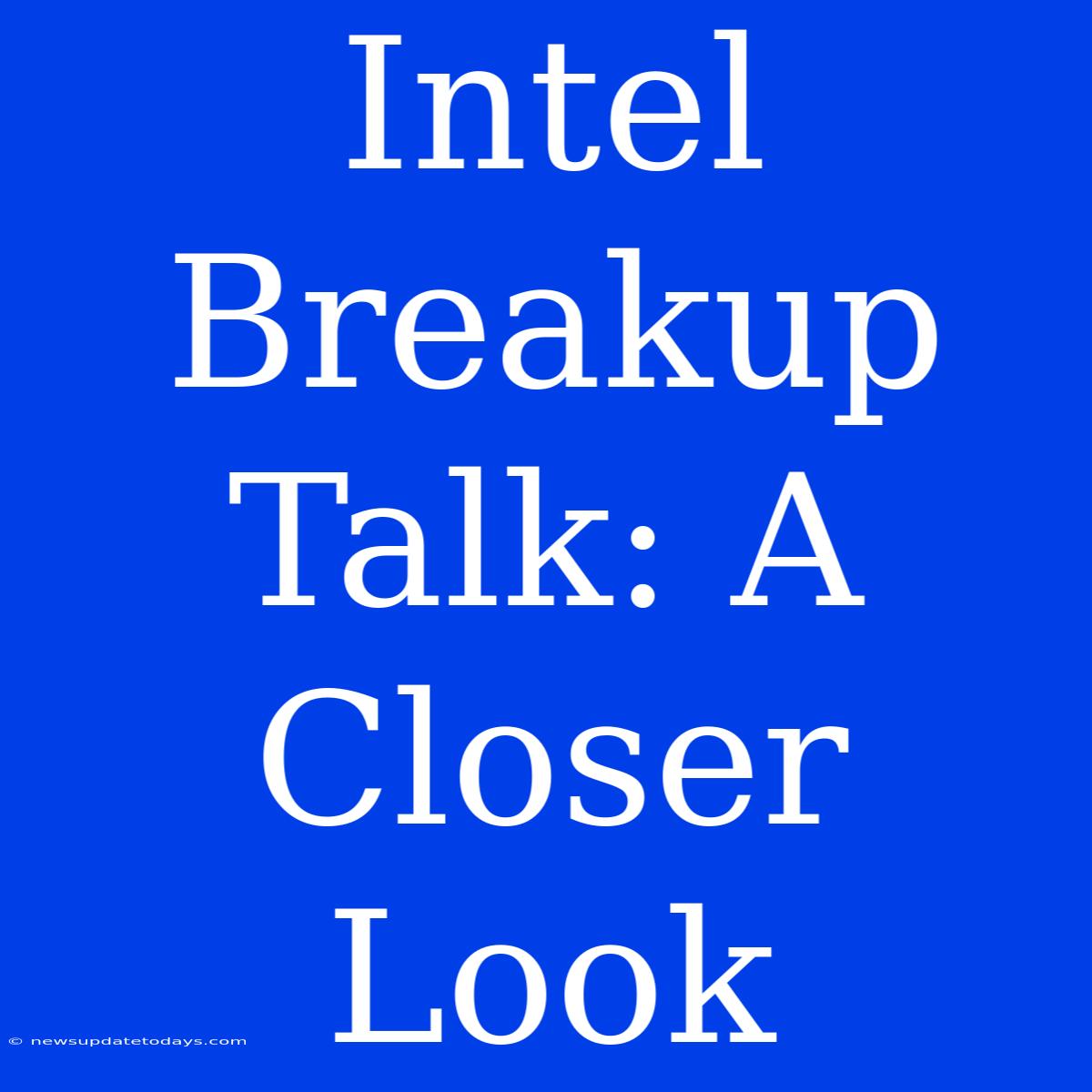Intel Breakup Talk: A Closer Look at the Potential Split
The tech world is buzzing with speculation: will Intel split into two separate companies? This "breakup" talk isn't new, but recent events have reignited the discussion, prompting a closer look at the potential implications. This article delves into the pros and cons of such a monumental decision for the chip giant.
Why the Talk of an Intel Split?
Intel's performance hasn't been stellar lately. Facing stiff competition from rivals like AMD and TSMC, the company has struggled to maintain its dominance in the CPU and GPU markets. This underperformance, coupled with investor pressure for better returns, has fueled the ongoing debate about restructuring. A potential split could focus resources and streamline operations, allowing each segment to pursue its own strategy more effectively.
Potential Benefits of an Intel Split:
- Increased Focus & Efficiency: Separating Intel's manufacturing (IDM) business from its design and product development could lead to sharper strategies and improved operational efficiency. Each entity could allocate resources to its core competencies without the overhead of managing disparate operations.
- Enhanced Agility & Innovation: Smaller, more focused companies often exhibit greater agility and responsiveness to market demands. This could lead to faster innovation cycles and quicker adaptation to technological advancements.
- Unlocking Shareholder Value: A split might unlock hidden value in each independent company. Investors could potentially see greater returns as each entity focuses on its specific market segment and attracts specialized investors.
- Attracting Top Talent: Separate companies might have more flexibility in attracting and retaining top talent in their respective fields. This could be particularly impactful in highly competitive tech sectors.
Potential Drawbacks of an Intel Split:
- Loss of Synergies: Currently, Intel benefits from the integration of design and manufacturing. A split could disrupt these synergies, potentially hindering innovation and increasing costs in the long run.
- Increased Competition: Two smaller entities might find themselves facing intensified competition from larger, more integrated rivals, potentially weakening their market positions.
- Duplication of Efforts and Costs: Separate companies would likely need to invest in redundant infrastructure and resources, leading to increased operational costs.
- Complex and Costly Process: The actual process of splitting a company as large as Intel would be incredibly complex and expensive, requiring significant time and resources.
What's Next for Intel?
The decision to split or not is a critical one with significant long-term consequences for Intel, its employees, and the broader technology landscape. While a split offers the potential for greater efficiency and innovation, it also carries considerable risk. Intel's leadership will need to carefully weigh the pros and cons before making a final decision. The coming months will be crucial in determining the future direction of this tech giant.
Keywords: Intel, Intel Split, Intel Breakup, Semiconductor Industry, Chip Manufacturing, CPU, GPU, IDM, Stock Market, Investor Pressure, Corporate Restructuring, Technology Industry, AMD, TSMC.

